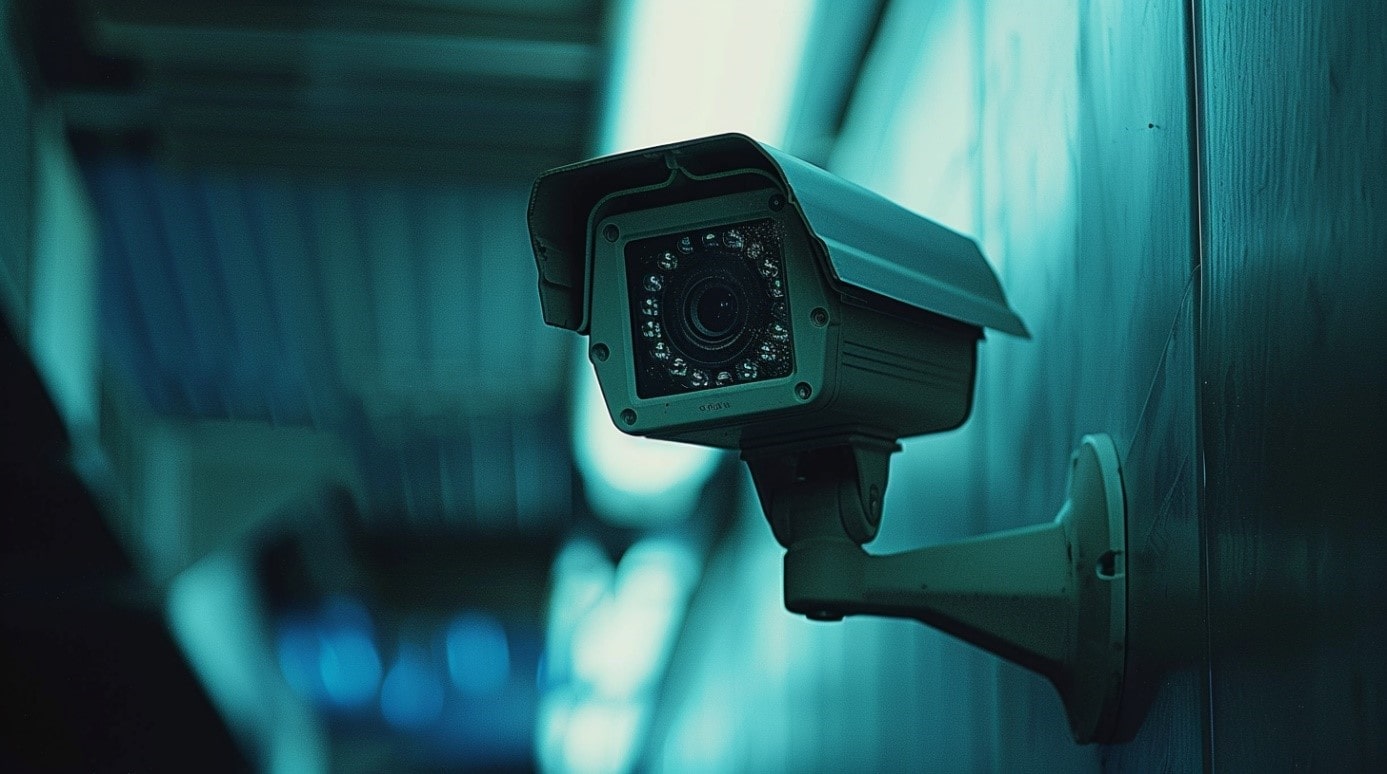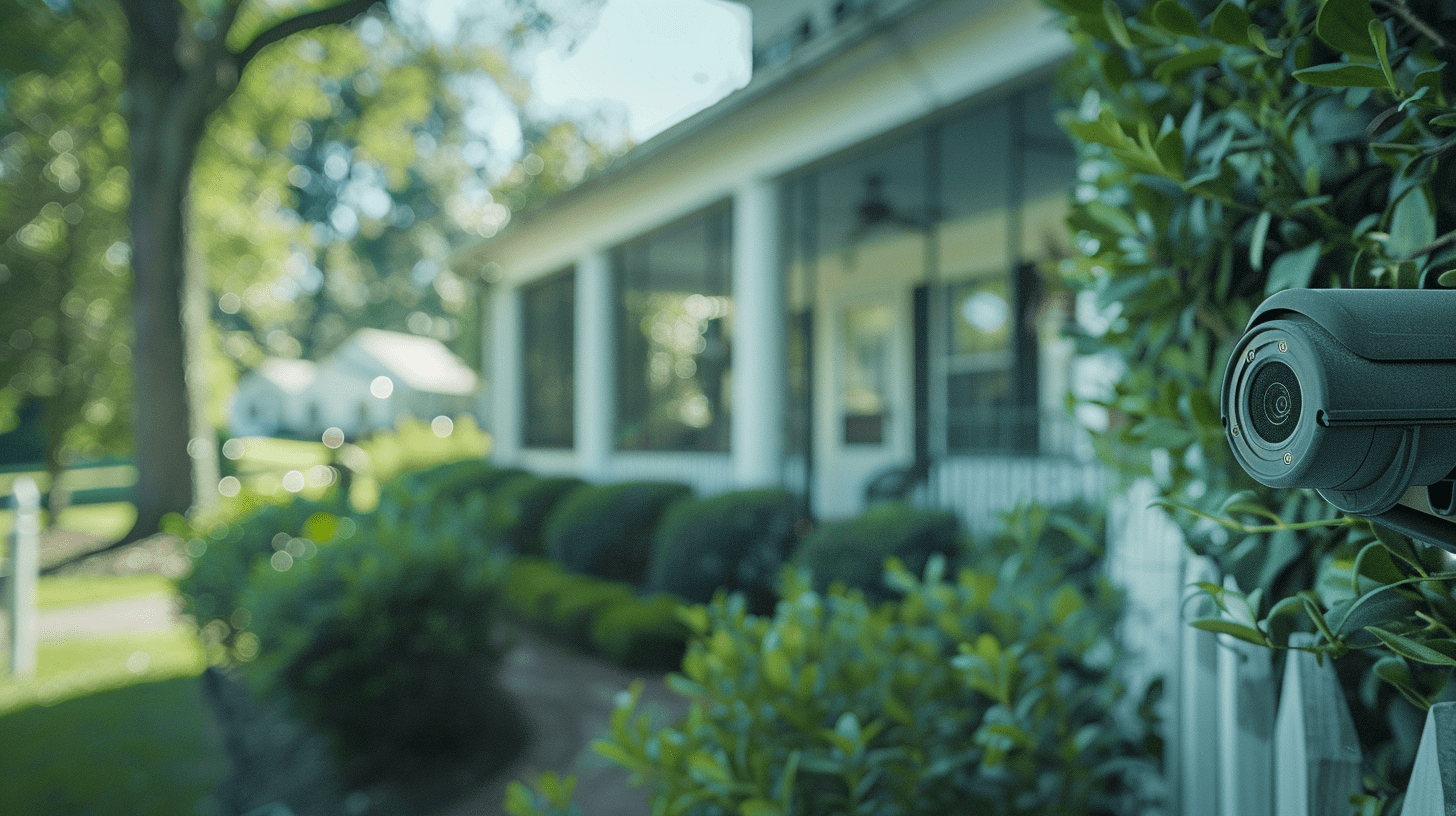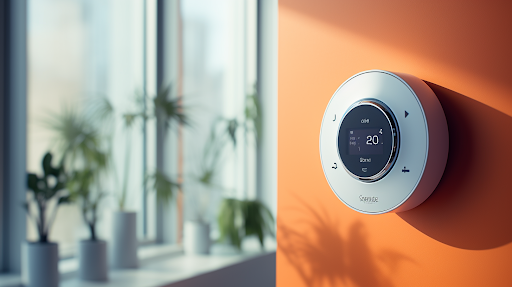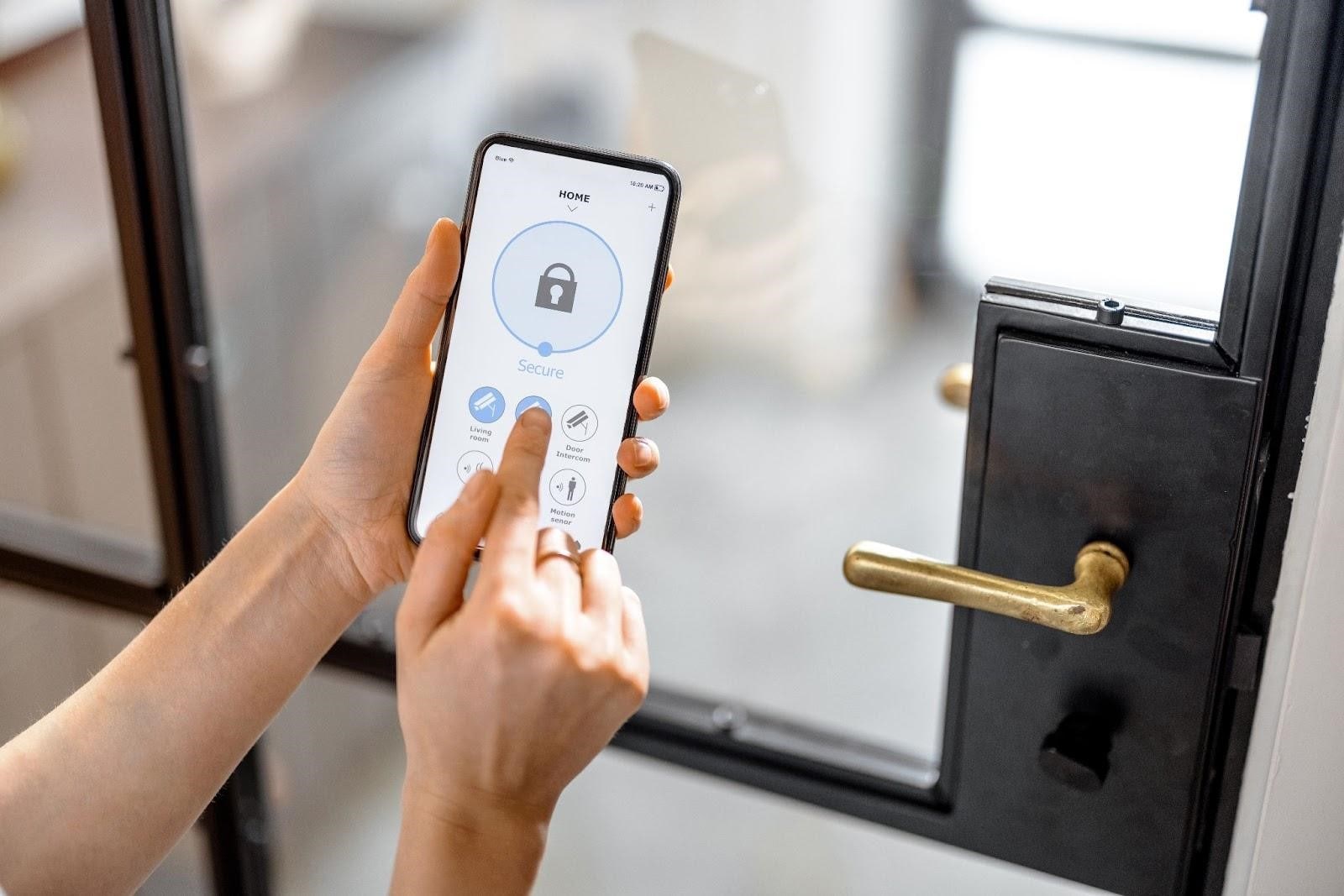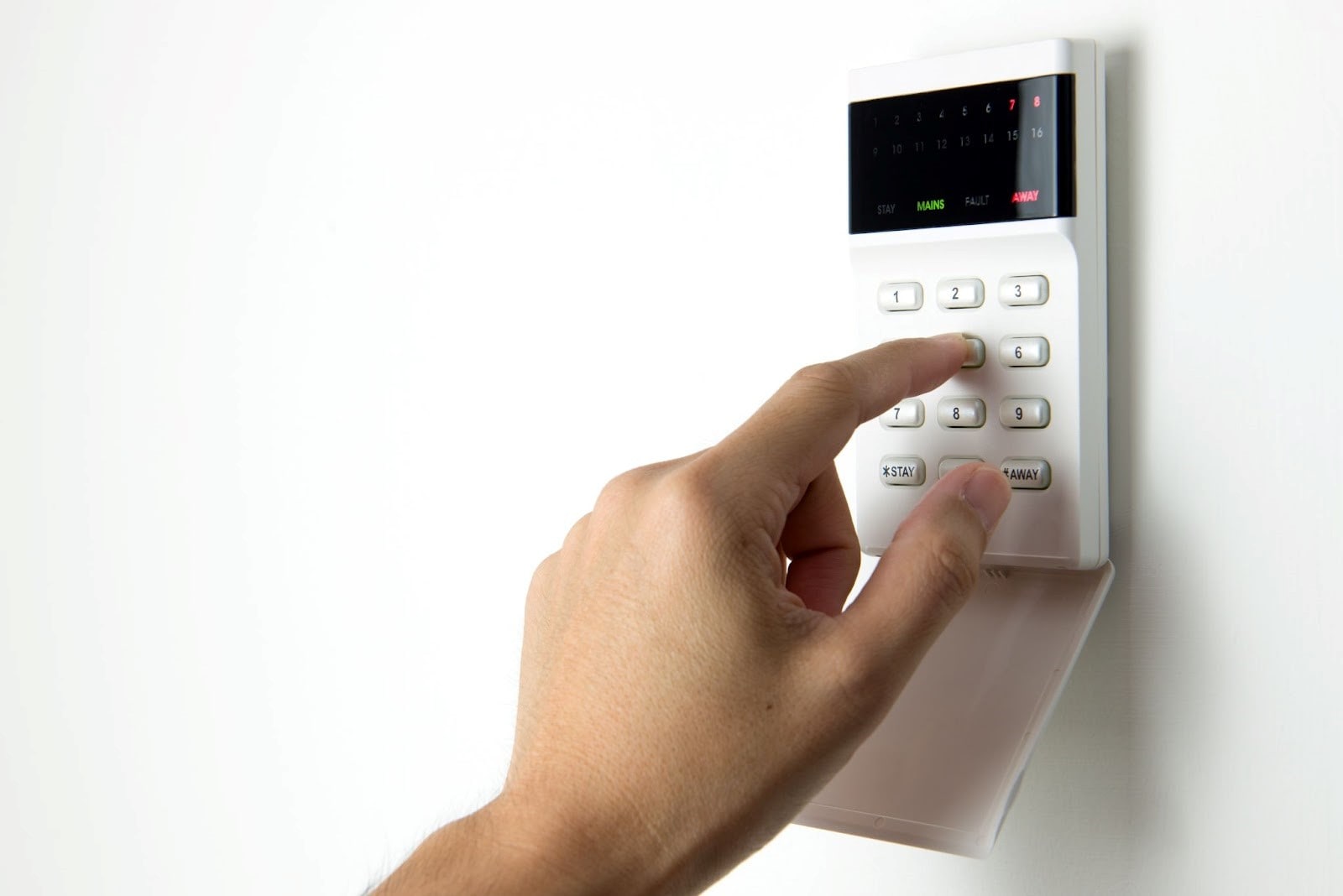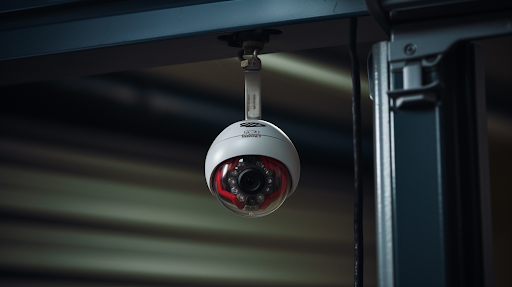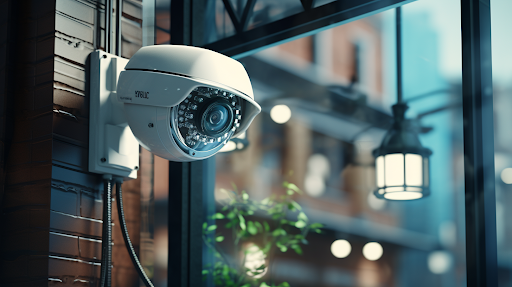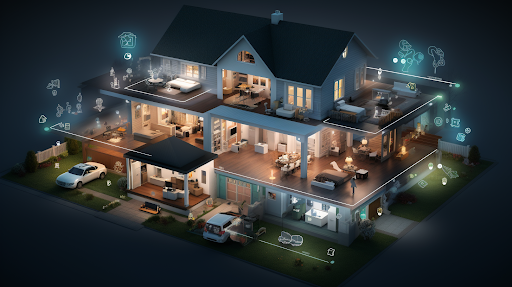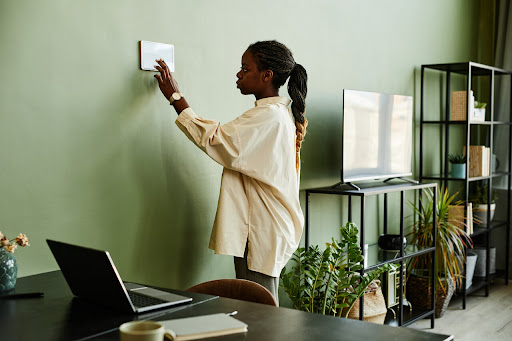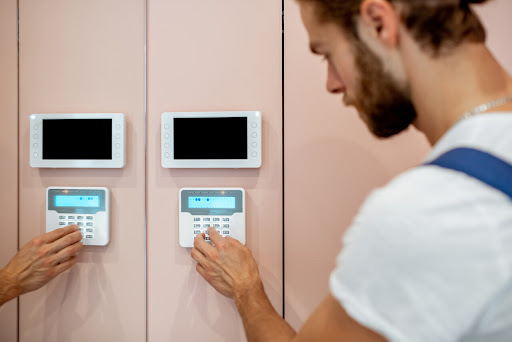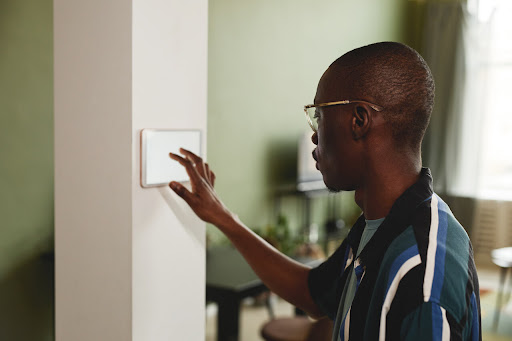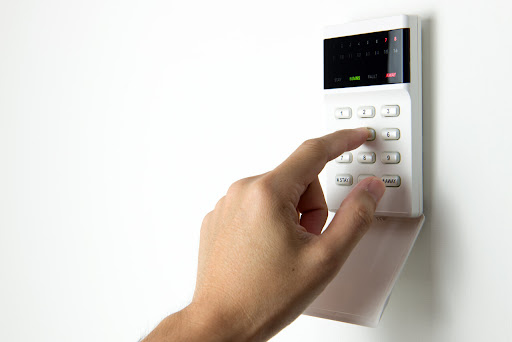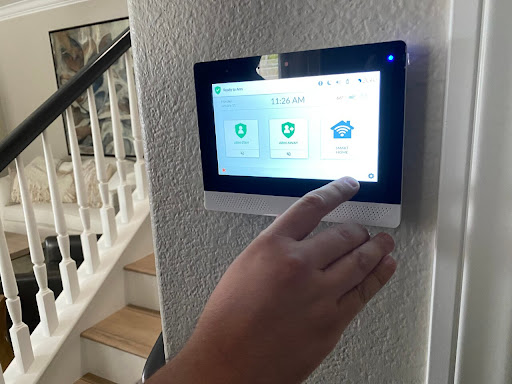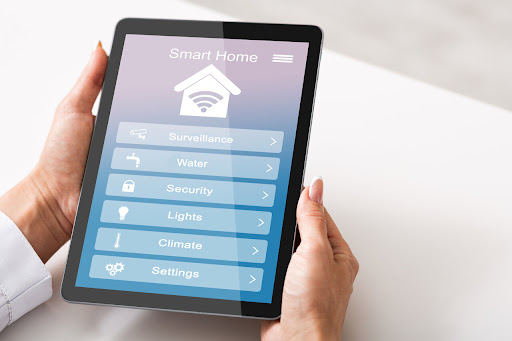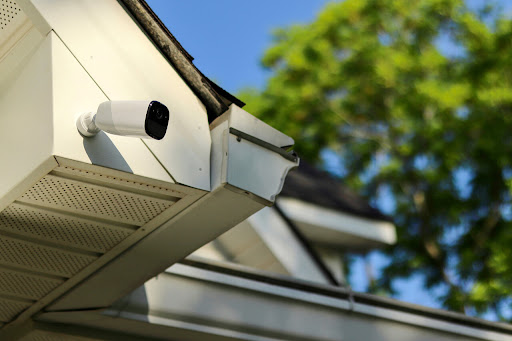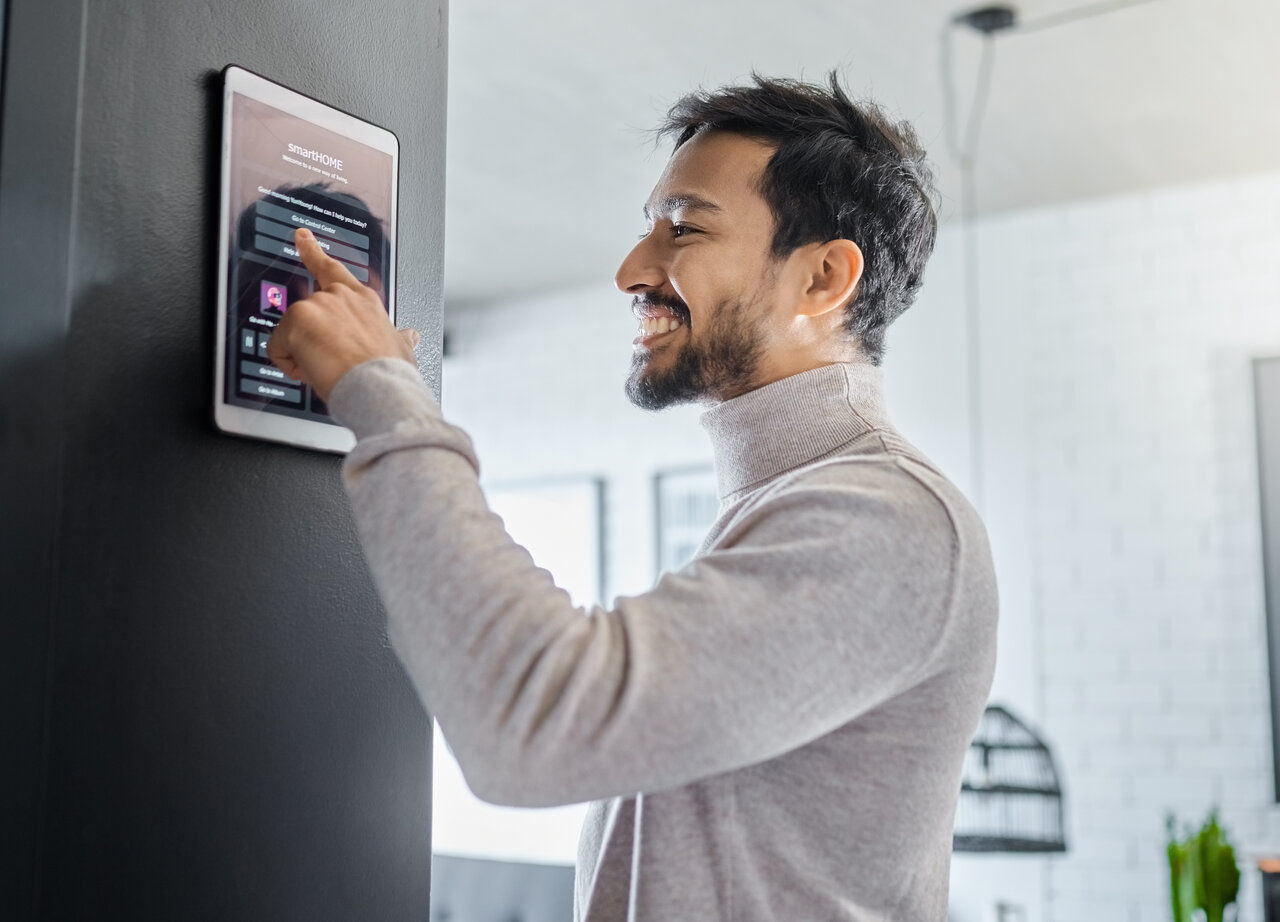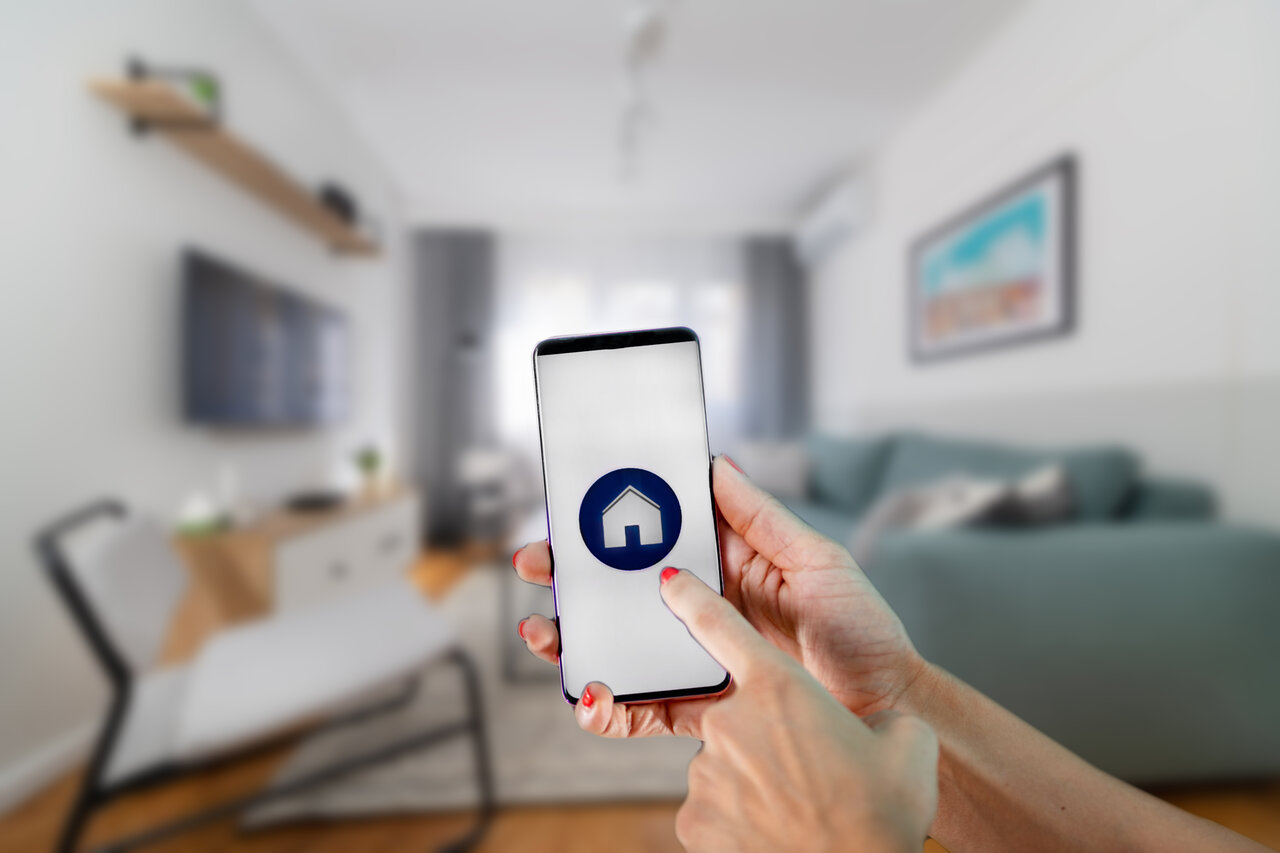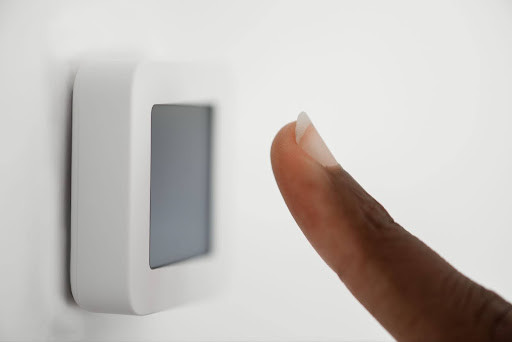
Smarter Living, Safer Homes: How to Choose a Security Camera System for Your Home
Sommaire
- Do I Need Home Security Cameras?
- Professional Monitoring Solutions: The Different Types of Home Surveillance Cameras
- The Average Cost of Home Security Cameras
- How Many Security Cameras Do I Need?
- Beyond Modern Security Cameras: Extra Features of Home Surveillance Solutions
- How to Choose the Right Home Surveillance System: Essential Factors to Consider
- Ensure the Safety of your Home with Sting Security
In an age where technological advancements are seamlessly integrated into our daily lives, ensuring the safety and security of our homes has never been more critical. The peace of mind that comes with knowing your loved ones and valuable possessions are protected is invaluable. One of the most effective ways to enhance the security of your home is by investing in a reliable security camera system.
As we navigate the myriad options available in the market, choosing the right security camera system can be a daunting task. From understanding the different types of cameras to considering technical specifications and compatibility, there are numerous factors to weigh in order to make an informed decision.
In this comprehensive guide, we walk you through the essential aspects of selecting a security camera system that suits your specific needs. Whether you’re a first-time homeowner looking to fortify your property or someone considering an upgrade to your existing surveillance setup, our insights will empower you to make a choice that aligns with your security goals.
Do I Need Home Security Cameras?
Yes, investing in home security cameras is a prudent decision in today’s security-conscious world. The evolving landscape of security camera features makes them an indispensable asset for safeguarding your home. Modern systems boast advanced capabilities such as high-definition video quality, ensuring that every detail is captured with clarity. Night vision technology extends surveillance into the darkness, offering round-the-clock protection.
The incorporation of motion detection allows the system to alert you to potential threats, distinguishing between routine movements and suspicious activities. When contemplating the need for home security cameras, consider the storage capacity they provide for recorded footage. Ample storage ensures that you have a comprehensive archive of events, aiding in retrospective analysis if required. Equally significant is the ability to receive remote alerts directly on your mobile devices.
Whether you’re at work, traveling, or simply away from the monitoring hub, the real-time notifications keep you informed about any unusual activity. This seamless integration with mobile devices not only enhances convenience but also empowers you with immediate awareness, reinforcing the protective barrier around your home. Therefore, with these advanced features like storage capacity and remote alerts, home security cameras emerge as a vital investment for fortifying your home and ensuring peace of mind.
Professional Monitoring Solutions: The Different Types of Home Surveillance Cameras
The variety of security cameras available today cater to different needs and preferences. Understanding the types of cameras, their features, and applications can help you make an informed decision to safeguard your home effectively:
- Outdoor Cameras: Outdoor security cameras, designed to withstand the elements, are ideal for monitoring the exterior of your home. With robust construction and weather-resistant features, these cameras capture high-quality footage, providing a crucial layer of defense against potential threats.
- Wired Security Cameras: Wired cameras offer a reliable power connection, ensuring continuous surveillance. These cameras use cables for both power and data transmission, providing stable performance. They are often chosen for their durability.
- Wireless Home Security Cameras: Wireless security cameras, on the other hand, offer installation flexibility. Operating on Wi-Fi networks, these cameras eliminate the need for intricate wiring, providing freedom in camera placement and reducing installation complexity.
- Indoor Cameras: Indoor security cameras are tailored for monitoring the interior of your home. Whether you’re concerned about the living room, nursery, or home office, these cameras offer discreet surveillance with features like two-way audio for enhanced security and communication.
- Video Doorbells: Doorbell cameras are a subset of outdoor cameras that focus on securing your entry points. These smart devices not only capture video footage but also facilitate two-way audio communication, making them an integral part of modern security systems.
- Smart Security Cameras: Smart security cameras leverage advanced technologies for intelligent surveillance. These devices often incorporate features like motion detection, facial recognition, and integration with smart home devices, elevating the level of security and control.
Can I Customize my Home Alarm System to Meet my Specific Needs?
The Average Cost of Home Security Cameras
The average cost of home security cameras can vary based on factors such as brand, features, and technology. Entry-level security camera systems, offering basic functionalities like live streaming and motion detection, can start at around $50 to $100 per camera. Mid-range options with additional features such as higher resolution, night vision, and remote access capabilities generally fall within the $100 to $300 range per camera.
High-end security cameras equipped with advanced features like facial recognition, cloud storage, and smart home integration can cost upwards of $300 to $500 or more per unit. Keep in mind that the total cost will also depend on the number of cameras needed to adequately cover your property. Additionally, some systems may require additional expenses for professional installation or subscription fees for cloud storage and advanced functionalities, impacting the overall investment in a home security camera setup.
How Many Security Cameras Do I Need?
Determining the number of security cameras you need for your home involves a careful consideration of several factors to ensure comprehensive coverage and effective surveillance. The optimal quantity of cameras depends on the size and layout of your property, as well as your specific security goals.
Firstly, assess the layout of your home and identify key entry points such as doors, windows, and vulnerable areas. These critical points should be prioritized for camera placement to capture potential intruders. High-traffic zones and areas with valuable assets should also be taken into account.
Consider the field of view each camera provides and the range of its coverage. Wide-angle lenses can monitor larger areas, while more focused lenses are suitable for specific spots that require detailed attention. Balancing these factors ensures you have a well-rounded surveillance system.
Furthermore, the exterior of your home may require more cameras than the interior, as outdoor cameras provide an additional layer of security. Covering blind spots, such as secluded corners or areas with limited visibility, is crucial for comprehensive monitoring.
In essence, there is no one-size-fits-all answer to the question of how many security cameras you need. It depends on your unique circumstances and security objectives. Careful planning, strategic placement, and a thoughtful consideration of your property’s layout will guide you in determining the ideal number of cameras for effective home security.
The Benefits of Integrating Lighting, Locks, and Thermostats in Your Home
Beyond Modern Security Cameras: Extra Features of Home Surveillance Solutions
Modern security cameras can be supplemented with a plethora of extra features to enhance your overall security setup. From advanced technologies to seamless connectivity, these additions provide an additional layer of protection and convenience:
- Real-Time Monitoring: Connectivity is the cornerstone of advanced surveillance solutions. With a robust Internet connection, homeowners can enjoy real-time monitoring, remote access to footage, and seamless integration with smart home ecosystems through Wi-Fi connectivity.
- Expert Setup: Some surveillance solutions offer professional installation services to ensure optimal camera placement and configuration. This not only simplifies the setup process but also guarantees that the cameras are strategically positioned for maximum coverage.
- Cloud Storage: Cloud storage solutions allow for secure and convenient storage of video footage. This feature ensures that your recorded data is not only safe from physical damage or theft but also easily accessible from various devices, providing flexibility in reviewing footage.
- Rechargeable Battery: Cameras equipped with rechargeable batteries offer a reliable power source and ensure uninterrupted surveillance, even during power outages. This feature adds an extra layer of resilience, providing peace of mind that your security system will continue to operate seamlessly.
- Proactive Security Measures: For homeowners seeking an extra layer of security, professional monitoring services are invaluable. These services utilize monitoring centers to keep a watchful eye on your property, promptly responding to alarms or potential threats. Trained professionals can respond swiftly to any suspicious activity or emergency.
- Person Detection: Advanced cameras with person detection technology reduce false alarms by specifically identifying human presence. This precision in alerting enhances the accuracy of notifications, focusing on potential security threats.
- Facial Features Recognition: Some sophisticated surveillance solutions go beyond person detection, incorporating facial recognition technology. This feature adds an extra layer of security by identifying familiar faces and alerting homeowners to potential unknown individuals.
- Two-Way Talk: Two-way audio functionality allows for real-time communication between homeowners and individuals in the monitored area. This interactive feature can be a deterrent to intruders or a convenient way to communicate with family members or visitors.
- Infrared Night Vision: Infrared night vision technology ensures clear footage, even in low-light or nighttime conditions. This feature is crucial for maintaining surveillance effectiveness around the clock.
- Extensive Video Archives: The ability to store hours of footage ensures that homeowners can review historical data for investigations or reference. This feature provides an extensive video archive, adding depth to the surveillance system’s capabilities.
- On-the-Go Surveillance: Accessing your surveillance system through mobile applications on smartphones or tablets offers on-the-go surveillance. You can monitor your property from anywhere, ensuring constant vigilance and control.
Can I Install a Home Alarm System Myself, or Do I Need Professional Installation?
How to Choose the Right Home Surveillance System: Essential Factors to Consider
Choosing the right home surveillance system is a crucial decision to ensure the safety and security of your property. Here’s a step-by-step guide to help you navigate through the process and make an informed choice:
- Define Your Security Needs: Assess the specific areas you want to monitor. Identify potential security threats and vulnerabilities. Additionally, determine whether you need indoor, outdoor, or both types of surveillance.
- Consider Wireless Cameras for Easy Installation: Evaluate wireless camera options for flexibility in installation. Wireless systems reduce the need for extensive wiring, simplifying setup.
- Check Internet Connectivity Requirements: Ensure that the surveillance system requires a stable Internet connection. Internet connectivity facilitates remote monitoring and access to footage.
- Prioritize High Video Resolution: Prioritize systems with high video resolution for clear and sharp images. HD security cameras contribute to better clarity in surveillance.
- Look for Smart Alerts and Notifications: Opt for systems that offer smart alert features for timely notifications. Smart alerts keep you informed about detected motion or security events.
- Consider Integration with Voice Commands: Check if the surveillance system integrates with voice command platforms like Google Home or Amazon Alexa. Voice command integration enhances the system’s ease of use.
- Evaluate Video Doorbell Cameras for Entry Points: If securing entry points is a priority, consider systems with video doorbell cameras. These cameras provide visibility and communication with visitors.
- Ensure Integration with Smart Home Systems: Choose a surveillance system that seamlessly integrates with your existing smart home devices. Integration enhances the overall efficiency and convenience of home automation.
- Consider Network Cameras for Advanced Features: Explore network cameras that offer advanced features like smart detection and cloud service integration. These features contribute to a more intelligent surveillance system.
- Choose Professional Installation: The knowledge and skill set of home surveillance specialists ensure optimal camera placement and configuration.
Ensure the Safety of your Home with Sting Security
Sting Security is your trusted partner for advanced security solutions in Montreal. We specialize in state-of-the-art alarm systems, providing customers with unparalleled peace of mind. From motion detectors to security cameras, we have everything you need.
Explore our range of solutions:
Contact us at +1 888 240-2048 or send us an online message to elevate your home’s security to the next level!
